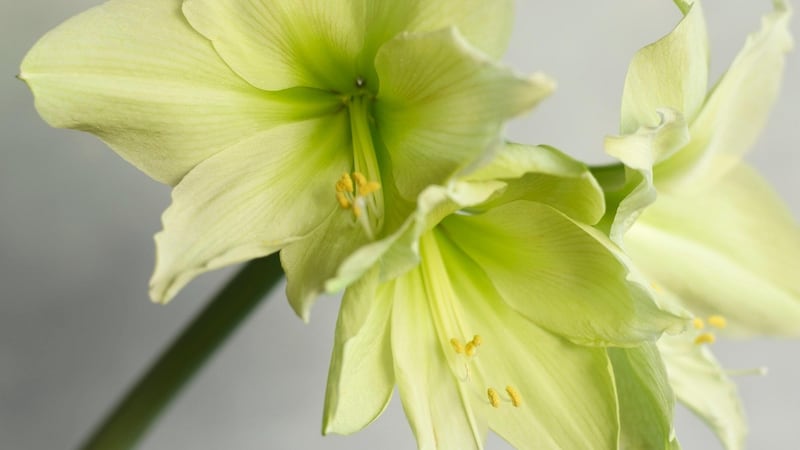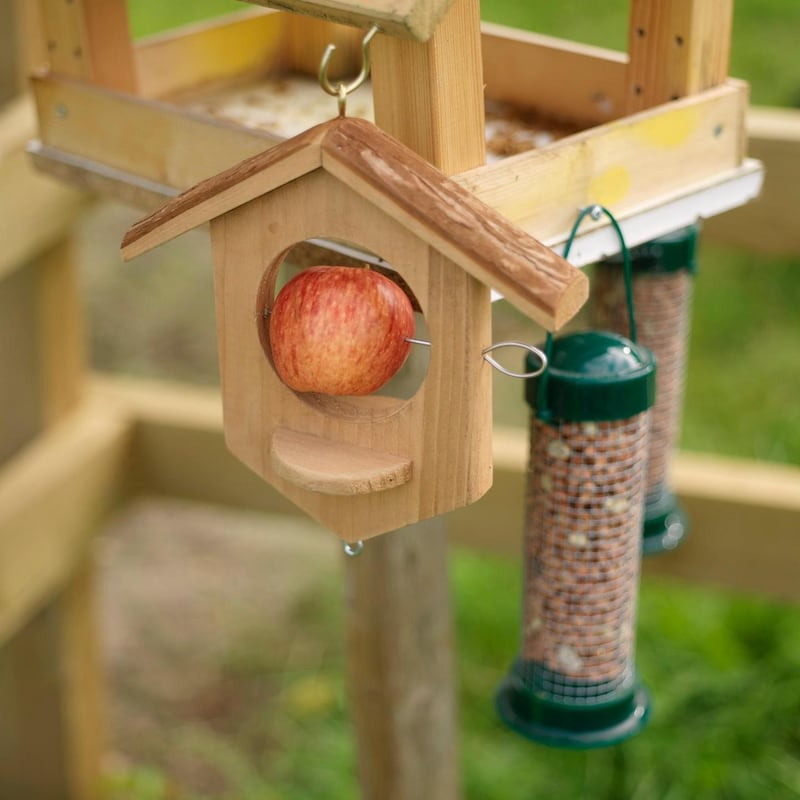I'm a lover of all things seasonal, foraged and locally grown, especially when it comes to decorating the home for Christmas. So, too, is Hanna Heubach, the west Cork-based floral designer whose five-acre flower farm and studio near Macroom has become something of a mecca for a new generation of florists.
Working under the studio name Hanako, she's earned a reputation for her ethereal, nature-inspired designs, which celebrate the ephemeral beauty of each passing season.
"I try to treat each piece as if it were a miniature landscape," is how she describes her design ethos, adding that things have changed a lot in Ireland in terms of people's appreciation of natural, seasonal arrangements.
“When my partner Klaus and I first came to live here in west Cork 25 years ago, we started selling posies of wild flowers in the local farmers’ markets, but there wasn’t much interest. Back then most people just wanted big, showy, long-stemmed flowers. So it’s great to see that the tide is really turning in that regard.”
In fact, Heubach’s been so busy “flowering” weddings, running her very popular floral workshops and selling her home-grown/foraged bouquets and arrangements in the local farmers’ markets, as well as helping to set up the new umbrella organisation, Flower Farmers of Ireland (of which she’s chairperson) that she recently decided 2018 will be a year completely free of work commitments.
“I’m taking some time off to travel, recharge and gather new inspiration,” she says with anticipation.
Christmas decoration
Inspiration, it has to be said, is something that this talented flower farmer never seems short of. So when I asked her to suggest a Christmas decoration that would be fun and easy to make, yet lovely enough to take pride of place suspended over that all-important Christmas table, I knew she wouldn’t disappoint.

The raw ingredients that Heubach uses in this seasonal piece are the kind that you might find growing in the garden or could forage for in local hedgerows or woodlands: a half-dozen fallen pine cones scooped from the ground during a wintry walk, a sculptural branch of contorted willow or hazel begged from an obliging gardening friend, a handful of half-dead, curling leaves seared by frost, and a sprig or two of evergreen conifer.
In other words, nothing that’s too expensive or difficult to get your hands on.
Yet when assembled with flair and an artist’s eye, the result is something that’s both delicately beautiful and magically evocative of an Irish Christmas.
Part of the great joy of this piece is its simplicity and the speed with which it can be assembled . Heubach simply uses a needle to thread each piece with what she calls ‘bullion wire’ (a fine florist’s wire) before tying it on to the main branch, which is suspended by a hook from the ceiling.
So if you’re one of those people whose past efforts at making a Christmas wreath have ended in tears or a tantrum, then this is for you. Similarly, if you’re looking for a homemade Christmas decoration to make with your young children– or grandchildren– then this is the very thing.
Don’t feel you have to replicate it exactly. For example, if you wanted to add a flash or two of brilliant scarlet for the season that’s in it, you could throw in a few foraged rose-hips or hawthorn berries.
Or if you can bear to cut a few stems of those gorgeous amaryllis that you perhaps potted up earlier this autumn – as I suggested in October – you could add these to the mix. Just gently tie two pieces of very fine string, wire or even raffia (one either side) roughly 3-4cm from the base of each upturned flower stem, then carefully fill the stems with water before tying them to the main branch.
If you’d like just a dash more bling, then Heubach suggests adding a few small Christmas decorations or some trailing ribbons, or spraying the leaves with bronze, silver or gold spray-paint (do this outdoors to avoid breathing in the fumes). Or for some ghostly glimmer, you could add a few stems of the silvery seed-heads of honesty (Lunaria), one of my own favourite seasonal materials to use in a Christmas arrangement.
Whichever combination you choose, the magic will be in the detail
Similarly, if you can’t get your hands on a nice branch of contorted hazel or willow, then use something similarly sculptural. It could be a branch from an old apple tree covered in silver-blue lichen, or a piece of salt-bleached driftwood found washed up on a winter beach.
Heubach points out that you can also easily tweak/rework this arrangement over the Christmas/new year period by replacing part of the plant material with something different to give it a fresh look. So for example, add a few ivy leaves or mistletoe for Christmas Day, then ring in New Year’s Eve by replacing these with the aforementioned amaryllis, or twigs of witch hazel, or teasels, or even the dried seed-heads of ornamental grasses. Whichever combination you choose, the magic will be in the detail.
[ hanako.ieOpens in new window ]
This Week in the Garden….
While the small, pale flower-clusters of the hardy, evergreen, shade-loving shrub known as Christmas box or Sarcococca confusa aren't going to add flashes of flamboyant colour to the garden at this time of year, they do pack a powerful punch in terms of their delicious, vanilla-like fragrance. Add to that the fact that it flowers from December right up until March, and this slow-growing, compact plant, which is also happy in a pot or container, more than earns its space in the winter garden. Stockists include Johnstown Garden Centre (johnstowngardencentre.ie) and mountvenusnursery.com

Many gardeners like growing amaryllis (Hippeastrum) in a bright warm room indoors at this time of year with the aim of having these sub-tropical bulbous plants in flower for Christmas or the new year. Now that their fleshy flower spikes are emerging, it’s important to give your amaryllis plants a weekly liquid tomato feed as well as to give them some support in the shape of a slender stake. Occasionally rotating the pot will also encourage even growth, but take extra care not to overwater these statuesque houseplants, which hate to sit in permanently damp compost.
December’s cold weather and dark, short days make it a challenging month for garden birds, so try to make sure that birdfeeders and bird tables are regularly cleaned and restocked with a varied selection of high-energy food including seeds, nuts (not loose), oats, sliced fruit, suet and mealworms. Providing birds with a safe and easily accessed source of clean water for drinking/washing is also important at this time of year.
Dates For Your Diary
Sunday, December 10th
Celebrating Christmas at Glasnevin, a Christmas craft market with live choir and Santa, at the National Botanic Gardens, Glasnevin, Dublin 9, from 10am. See botanicgardens.ie
Wednesday, December 13th
The Magic of Christmas, a demonstration by Sharon O’Sullivan on behalf of South County Dublin Horticultural Society, at Kill O’The Grange Parish Centre, Kill Lane. Admission €5











